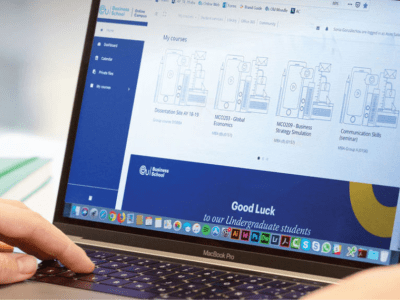Assessing The Damage: Creating A Post-Crisis Strategy Plan
Businesses often overlook post-crisis strategies. It’s easy for leaders within an organisation to become consumed with short-term crisis management, forgetting or sidelining longer-term planning in the process.
But this can be a potentially catastrophic mistake. Companies that have a strategy for dealing with uncertain markets and new customer needs after a crisis has passed are in a much better position to make a full recovery and even thrive in the future.
The current COVID-19 pandemic has already proven fatal to many businesses. If you are lucky enough to have made it through, a long-term plan will ensure your continued survival.
In this post, we’re going to explore six ways that you can build a post-crisis strategy. Properly implemented, these tips will put your organisation in the best possible position to survive, grow and eventually prosper.
What Is a Post-Crisis Strategy Plan?
A post-crisis plan is a framework for maintaining and growing a business once the worst of a crisis is over. It is made up of two parts: broad strategies for dealing with market shifts and opportunities, and more detailed processes for overcoming specific challenges.
A post-crisis plan essentially answers the question, “How will this company move forward in the coming months and years?”
It provides a central document that all departments , from marketing to human resources, can consult to inform individual approaches. It also ensures that high-level decisions are implemented right across an organisation, and that nobody is left in any doubt about what changes need to be made.
1. Honestly Assess Your Financial Situation
Crises invariably cause cash-flow problems for businesses. If you have been unable to trade at your normal levels for some time, it’s essential to assess the financial damage before implementing any other changes. This is especially the case if you have taken advantage of short-term cash-flow solutions, such as temporary business loans, government aid packages or discounted sale of stock.
As you are creating a long-term strategy, it’s equally important to forecast well into the future, envisioning what your accounts will look like in several months and years predicted given market conditions. Take into consideration your existing reserves, payment holidays with suppliers and any unpaid invoices from customers. Also remember to account for noncurrent assets such as premises and equipment, which may provide a safety net as a last resort.
Having a clear understanding of your business finances will enable you to make financially-sustainable decisions and prevent any further damage.
2. Clarify Ongoing Challenges
Which specific challenges will you have to deal with as you move forward? It’s important to be as detailed as possible when answering this question, so as to avoid any confusionacross your company.
Is there, for example, any new legislation that you need to account for? Are there any government-mandated safety policies? Are you unable to connect with customers via normal channels?
Coronavirus is a relevant example of this point. Businesses of all shapes and sizes are now required to implement social distancing measures, for instance, and this is expected to continue well into the future. It’s also likely that large numbers of people will opt for home delivery and video conferencing instead of in-store shopping or face-to-face meetings.
3. Update Your Current Short-Term Crisis Contingencies
While you may have already dealt well with the short-term challenges of a particular crisis, there is likely room for improvement. Part of your long-term plan should be dedicated to new processes, based on insights from previous crises, for tackling any similar events that may occur.
Identifying ways that you could have performed better will enable you to respond much more quickly and effectively in the future, limiting the overall damage. Pay particular attention to contingencies for alternative supply chains, new customer communication channels and working practices. If employees will be required to operate remotely, for example, are there any ways you can streamline the transition from office to home working?
4. Define Your Post-Crisis Value Proposition
Depending on the extent of the crisis you faced, customer needs and expectations may have shifted. Re-defining your value proposition will allow you to position yourself to best meet these new demands. Often, you will only have to make slight tweaks to your current values and offerings. But even small changes can dramatically increase your attractiveness to customers.

As a result of COVID-19, for example, many companies are placing renewed emphasis on safety measures designed to protect customers. It’s also becoming more common for businesses to offer additional services, such as expedited home delivery, and play a greater role in the community by providing discounts for front-line health staff.
5. Look for Opportunities in the Market
While crises such as the COVID-19 pandemic are never a source for optimism, it’s still vital for businesses that have weathered the storm to take a level-headed look at the market. It’s likely that many companies won’t have survived, for instance, and this will open up new opportunities. Equally, changing market demands and needs create space for new services and products.
By leveraging new opportunities, you are giving yourself the best possible chance of a speedy recovery. Revenue from additional products and services will often make up for any unavoidable losses and allow you to rebuild cash reserves.
6. Build Positive Insights Into Your Company’s Processes
Crises often force companies to implement new approaches and ideas. And many of these could be carried forward successfully into the future. A large number of businesses, for example, have realized productivity benefits after being forced to make employees work from home during the coronavirus pandemic.
Consider if any recently-introduced practices may provide longer-term benefits. It’s always a good idea to leverage data when reforming or introducing new company processes, and to ensure that a robust testing infrastructure is in place.
Launch Your Business Career With EU Business School
Now, more than ever, the world needs passionate, experienced business leaders. If you’re excited by the prospect of a career in business, EU Business School can provide you with all the knowledge and hands-on training you need to thrive in your chosen field.










